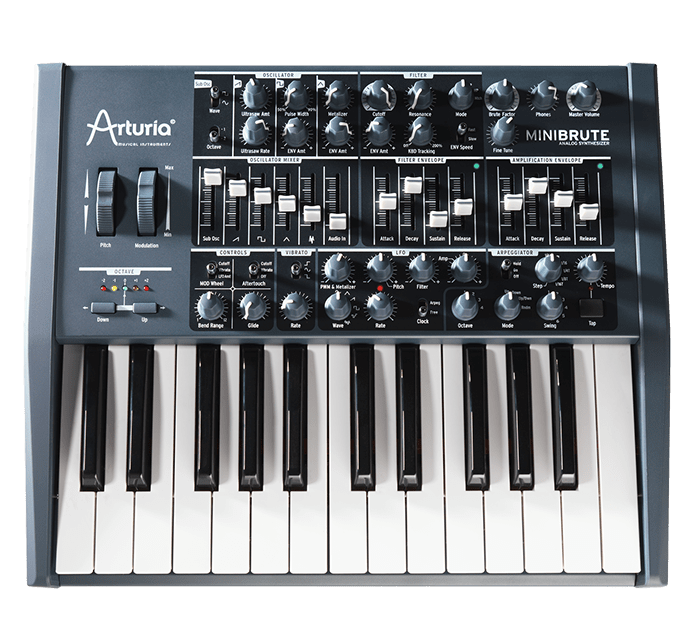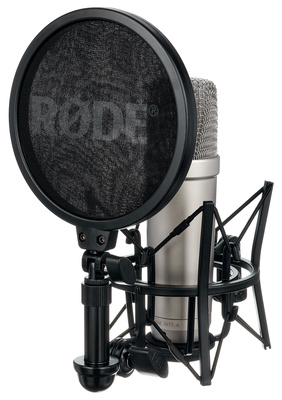 |
| Cubase 6 Logo |
Clean Bandit ft Jess Glynne- Rather Be
The official track and music video for Rather Be.
How to set up a project
To set up a new project you have to click on the Cubase application, which screen shot (1) will appear. To create the project you simply click 'Create', then screenshot (2) will appear. |
| New Cubase Project (2) |
 |
| Creating a new Cubase project (1) |
Cubase is a type of DAW which stands for Digital Audio Interface, it is a piece of software which allows you to record, edit and produce music files. My software DAW is comprised of four seperate components, the computer, audio interface, digital audio editor and at least one input device. Cubase is the DAW I am going to use to complete my sequencing task.
I am going to use Cubase to digitally input the notes to complete the song, I will also use the software to mix the project to a professional standard.
History
Cubase was developed by the German musical software and equipment company Steinberg. The first version of Cubase was released in 1989 and could only be recorded via MIDI only. Up till now there has been 8 versions of Cubase released, which have had subversions developed.
| First version of Cubase |
| Latest version of Cubase |
 |
| Setting the Tempo |
Once you have Cubase set up, the first step is to the set the temp of the track. This way when you start to input notes they will be in the correct time signature. The tempo for this song is 115bpm for the first 8 bars. However after bar 8 the tempo increases to 121bpm.
To alter the tempo on Cubase you double click on the tempo icon, which will then allow you to type in a new value.
The type of operating system I am using for this sequencing task is a Mac OS X, which has had various versions created over the years, the first being in 1999. These operating systems are developed and marketed by Apple, its the second most widely used desktop OS after Windows.
Setting up a track with Hal Lion SE
 |
| Adding a new 'instrument' track |
There is a total of 127 different instruments that can be chosen, and the first type of instrument I will need is strings. To choose an instrument you have to use the 'black search box' underneath HALion sonic SE. There you can select the type of instrument you want, in this case I am looking for a string timbre.
 |
| Choosing the HALion sonic SE |
 |
| Searching for a instrument |
General Midi or GM is a standardised specification for music synthesisers that respond to MIDI messages. Another type of track I will need to create to complete the sequencing task is a Sylenth track. Sylenth is an analog synthesiser, which is available on Cubase. I will use it to manipulate and improve the quality of certain timbres to make them more sound closer to the original. Features on this synthesiser include 4 oscillators, which can generate different waveforms. There is also 2 ADSR envelopes which I can use to modulate a whole set of different parameters.
Using groove agent for drums
To create the drum timbres for the sequencing task I decided to use the groove agent, which is an important feature on Cubase. This feature allows me to choose between a wide range of drum sounds which I can allocate certain sounds to certain notes, which makes them easier to access. From the Groove Agent I can allocate drums for the snare, hi-hat and kick. It also makes them a lot easier to add effects too and manipulate to make them sound more like the original song.
 |
| Adding a groove agent track |
 |
| Groove agent panel |
Using Key editor to input notes
 |
| Key editor : Strings section |
 |
| Using the Controller selection and Functions |
 |
| Checking/Changing the velocity of notes |
 |
| Tool Bar |
How to use the KeyStudio keyboard to input notes
Another way I can input notes is by using KeyStudio keyboard, it can be connected to the Mac which links up to Cubase. There are templates available as well as a 3GB audio loop library. The KeyStudio is a type of midi instrument, which have three sockets. These MIDI cables connect the keyboard by means of MIDI In, MIDI Out and MIDI Thru. The MIDI In cable receives incoming MIDI messages, the MIDI Out then transmits the actions of the keyboard to another device, in this case the Mac. The MDI Thru is connected with a Jack lead, which provides a direct copy of data being transmitted into the MIDI In. So when I play a note on the keyboard MIDI messages will be transmitted through to Cubase on the Mac. |
| Opening up 'Devices' and selecting 'VST Connections' |
 |
| Connecting KeyStudio IO |
Other MIDI controllers that could be used for this sequencing task include the Alesis V Mini 25-Key MIDI Keyboard controller, IK Multimedia BlueBoard IOS MIDI Pedalboard and Behringer CMD MM-1 Mixer Control Module. All these are types of MDI controllers because they are all either a piece of software or hardware that generates and transmits MIDI data to MIDI enabled devices.
On Cubase there are two different types of midi files, which are both standard midi files. This is how midi is stored. The first is type 1, this type of midi file is where the individual parts are saved onto different tracks, ultimately separating them. The second is type 0, in this type of file all the parts of merged onto a single track. A positive of using midi files is that it does not need to capture and store actual sounds. Midi files are smaller than audio files, and can also be edited if needed.
This is the reason we are saving are sequencing task into a midi file, it is because they are lot easier to access and edit.
Synthesisers
A synthesiser is an electronic musical instrument which generates electric signals, which in turn are converted to sound waves. They can be used to imitate existing sounds or generate new timbres. Synthesisers mainly use hardware such as a musical keyboard to function, but they do use software to operate as well. For example Cubase, which is what I am using to complete this sequencing task. The synthesiser can generate different sound waves, which affect the overall timbre.
Sawtooth
A sawtooth wave is a non-sinusoidal wave, it resembles the teeth of a saw. This type of wave goes upward like a hill and then drops down sharply.
Square
 It is a non-sinusoidal wave, in which the amplitude alternates at a steady frequency. It ranges between the minimum and maximum values.
It is a non-sinusoidal wave, in which the amplitude alternates at a steady frequency. It ranges between the minimum and maximum values.
Sawtooth
A sawtooth wave is a non-sinusoidal wave, it resembles the teeth of a saw. This type of wave goes upward like a hill and then drops down sharply.
Square
 It is a non-sinusoidal wave, in which the amplitude alternates at a steady frequency. It ranges between the minimum and maximum values.
It is a non-sinusoidal wave, in which the amplitude alternates at a steady frequency. It ranges between the minimum and maximum values.Sine
This is considered to be the 'pure' wave because every other wave starts out as a sine wave.
Triangle
A non-sinusoidal waveform, named for its triangular shape. Similar to a square wave it contains only odd harmonies, demonstrating odd symmetry.
| One of Roland's first synthesiers |
There are a range of synthesisers that I could have used to complete this sequencing task, one very popular brand of synthesiser is Roland synthesisers. Rolands have been very influential on the electronic music scene, with the release of their first synth 'SH1000' in the early 1970's. They have become a very popular brand, due to the fact that they are known for their high-quality sound.
Yamaha have been creating and developing new synthesisers for over 45 years. They are known to have created some of the greatest synthesisers, including the MONTAGE series and the portable reface CS.
MiniBrute is the newest type of analog synthesiser from the company Arturia. This new synthesiser has been considered 'revolutionary' because it features a pure analog signal path. It also features a VCO waver mixer. What also makes this synthesiser unique is that it is the first analog synth the company has ever released.
Samplers
A sampler is another type of musical instrument, similar to a synthesiser, but instead uses recordings (samples). These samples can then be played back through a hardware device, such as a keyboard or sequencer to compose music. A positive of samplers is that the information can quickly be accessed because they are stored in the digital memory of the sampler. The sample can then be altered and manipulated using various effects, once recorded samples are often pitch-shifted to produce various musical scales and chords. Before memory based samplers, samples would have been stored on analog tape.
 |
| AKAI MPC2000 sampler (1997) |
There are many different types of samplers, they are usually classified depending on what specification they fit into. These specification are:
- Outputs- How many discrete audio outputs are available
- Polyphony- How many voices can play simultaneously
- Bit depth- How may sample resolution can be supported
- Sample space- How much memory is available to load samples
- Channels- How many different MIDI channels are available for different instruments
 |
| Overall sequencing project |
Tracklist
Now that the sequencing task is complete I am going to export the final mix down. To export a Cubase file, you click 'File', 'Export', then 'Audio Mixdown'. Once the faders are placed in the correct place, highlighting the entire piece it is then ready to mixdown.
 |
| Exporting a file |
Track 1
Hal Lion SE [GM 049] String Ensemble- Strings (Treble)
Track 2
Hal Lion SE [GM 049] String Ensemble- Strings (Bass)
Hal Lion SE [GM 049] String Ensemble- Strings (Bass)
Track 3
Hal Lion SE [GM 007] Harpsichord- Synth
Hal Lion SE [GM 007] Harpsichord- Synth
Track 4
Hal Lion SE [GM 007] Harpsichord- Synth (Bass)
Hal Lion SE [GM 007] Harpsichord- Synth (Bass)
Track 5
Hal Lion SE [GM 005] Electric Piano 1- Piano
Track 6
Hal Lion SE [GM 005] Electric Piano 1- Piano Solo
Hal Lion SE [GM 005] Electric Piano 1- Piano Solo
Track 7
Hal Lion SE Smooth Choir NoteExp- Lead Vocal
Hal Lion SE Smooth Choir NoteExp- Lead Vocal
Track 8
Hal Lion SE Robotic Voice- Backing Vocals
Hal Lion SE Robotic Voice- Backing Vocals
Track 9
Hal Lion SE [GM 040] Synth Bass 2- Bass
Track 10
Groove Agent ONE- Hi-hat
Groove Agent ONE- Hi-hat
Track 11
Groove Agent ONE- Snare
Groove Agent ONE- Snare
Track 12
Groove Agent ONE- Kick
Groove Agent ONE- Kick
https://soundcloud.com/user-886671367/rather-be-final-mixdown

